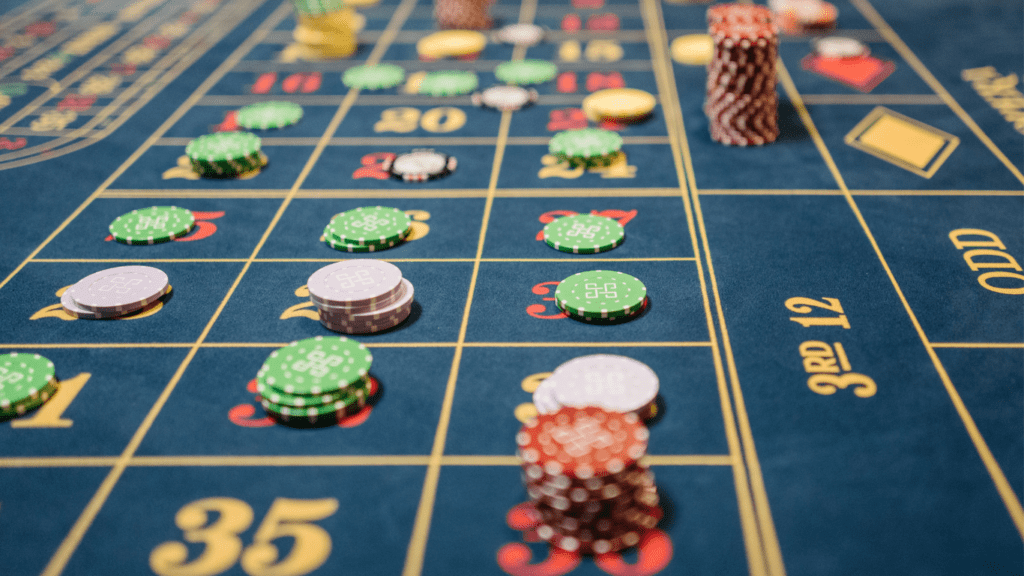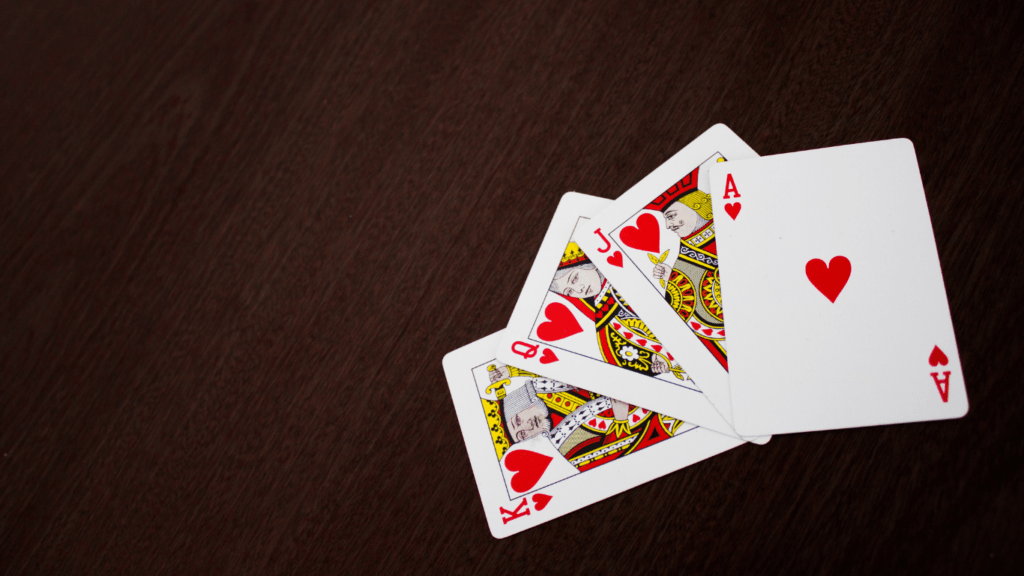Walking into a casino can be both exhilarating and overwhelming. With the bright lights, the sound of chips clinking, and the thrill of potential winnings, it’s easy to get caught up in the excitement. But if you’re serious about walking away with more than just memories, you need a game plan.
Understanding Casino Table Games
Casino table games come with diverse rules and strategies. Blackjack, poker, craps, and roulette dominate most casino floors. Each game’s unique, offering distinct experiences and levels of complexity.
Types of Casino Table Games
- Blackjack: Players compete against the dealer to get a hand total closest to 21 without going over. Basic strategy and card counting boost odds.
- Poker: Variants like Texas Hold’em and Omaha challenge players to form the best hand or convince others to fold. Bluffing and reading opponents are crucial.
- Craps: Players bet on the outcome of dice rolls. Terms like “pass line” and “don’t pass” bets define the flow. It’s a social game with many bet types.
- Roulette: Players bet on numbers, colors, or combinations on a spinning wheel. European roulette, with one zero, offers better odds than American roulette, which has two zeros.
Basic Rules and Objectives
- Blackjack: Aim to have a higher total than the dealer without exceeding 21. Understanding when to hit, stand, double down, or split is essential.
- Poker: The objective is to win chips through combinations, betting tactics, and bluffing. Hands rank from high card to royal flush.
- Craps: Players win by betting correctly on the dice outcomes. Beginners often stick to simple bets like pass line.
- Roulette: Place bets on where a ball lands on a spinning wheel. Payouts vary based on the risk of the bet.
House Edge and Probability
Understanding the house edge and probability for each game helps in making informed decisions. For instance:
- Blackjack: The house edge ranges from 0.5% with optimal strategy.
- Poker: Players compete against each other, not the house, so skill affects outcomes more.
- Craps: House edge varies; pass line bets have about 1.41%.
- Roulette: European roulette has a 2.7% edge, while American roulette’s edge is 5.26%.
Social Dynamics
Casino table games often involve social interaction. In poker, reading opponents’ behaviors and betting patterns contributes to strategy. Craps typically draw crowds, making teamwork in bets common. Blackjack and roulette also have social elements but can be played solo.
Preparing for Table Games
Preparation involves understanding rules and practicing strategies. Online platforms offer free versions to hone skills. Familiarizing oneself with casino etiquette, like tipping dealers and handling chips, ensures a smooth experience.
Each casino table game brings its own set of challenges and excitement. Mastering different aspects increases the likelihood of winning and enhances the overall enjoyment of the casino experience.
Importance of Strategy in Casino Games
Applying strategy in casino games elevates a player’s chances of success. Understanding game mechanics alone isn’t enough; a calculated approach tailored to each game type is crucial. In blackjack, employing basic strategy minimizes the house edge by dictating optimal decisions based on the player’s hand and dealer’s upcard. In poker, using a mix of aggressive and conservative betting tactics while reading opponents can lead to substantial wins.
Analyzing probability plays a significant role in ensuring informed choices. For instance, in roulette, players benefit by understanding the odds associated with different types of bets. Knowing that even-money bets (e.g., red or black) have nearly a 50% chance of winning helps in managing risk effectively.
Bankroll management is another essential aspect. Keeping track of finances and setting limits ensures longer playing sessions and reduces the risk of substantial losses. Rather than chasing losses, disciplined players walk away when needed, maintaining a strategic edge.
Practicing these strategies consistently is vital. Online simulations and low-stakes games offer opportunities to hone skills without significant financial risk. Through practice, players can refine their techniques and execute strategies seamlessly when playing in a real casino environment.
Recognizing the social element also contributes to strategic success. Reading body language and understanding psychological tactics can provide insight in games like poker. In blackjack, maintaining a polite demeanor with the dealer can result in a more enjoyable and less adversarial experience.
A well-crafted strategy tailored to the specific casino game not only increases the likelihood of winning but also enhances the overall gaming experience.
Blackjack Strategies

Mastering blackjack requires a mix of skill and strategy. This section explores fundamental techniques for improving blackjack odds.
Basic Strategy
Basic strategy forms the foundation of any successful blackjack approach. I use charts that outline the best decisions based on my hand and the dealer’s upcard. For instance, always hit on a hand total of 11 or less and stand on 17 or higher. Pairs like 8s and Aces should always be split, while 10s and 5s should never be split. These guidelines substantially reduce the house edge.
Card Counting
Card counting can elevate my game by keeping track of the high and low cards dealt. I assign values (e.g., +1 for 2 through 6, 0 for 7 through 9, -1 for 10, and Aces) and add them up to get a running count. When the count is high, I bet more as the odds favor me. Casinos frown upon card counting, so I vary my bet sizes subtly to avoid detection.
Bankroll Management
Effective bankroll management ensures I stay in the game longer. I divide my total bankroll into smaller betting units, usually 1-2% of the total per bet. I also set win and loss limits; if I lose a predetermined amount, I walk away to avoid chasing losses. Responsible bankroll management keeps my losses minimal and enhances my overall gaming experience.
Roulette Strategies
Winning at roulette requires employing effective strategies. I will discuss three popular systems: Martingale, Fibonacci, and James Bond.
Martingale System
The Martingale System involves doubling your bet after every loss. This system ensures you recover all previous losses with a single win. If you bet $10 and lose, the next bet would be $20, followed by $40 if you lose again, and so on. While effective in theory, this system demands a large bankroll and has limitations due to table limits.
Fibonacci System
The Fibonacci System is a more calculated approach than the Martingale. Bets follow the Fibonacci sequence: 1, 1, 2, 3, 5, 8, etc. Each bet is the sum of the previous two. If you lose a bet, move to the next number in the sequence. If you win, move back two numbers. For example, after losing $1, $1, and $2, bet $3; if you win, return to $1. This system helps manage risks but requires careful tracking.
James Bond Strategy
The James Bond Strategy divides your total bet into three parts: 70% on high numbers (19-36), 25% on low numbers (13-18), and 5% on zero. For instance, with $100, you bet $70 on high numbers, $25 on 13-18, and $5 on zero. This strategy covers a wide range of numbers, increasing the chances of winning but offering lower payouts compared to pure single-number bets.
Poker Strategies
Winning at poker requires a combination of skill, strategy, and psychological insight. The following strategies can help improve your game and increase your chances of success at the table.
Bluffing Techniques
Using effective bluffing techniques can significantly impact your poker success. Bluffing involves making other players believe you have a stronger hand than you actually do. For instance, in a game with a high-value pot, raising the stakes can force opponents with weaker hands to fold. Successful bluffing depends on timing and the ability to read your opponents’ reactions. Overuse can diminish its effectiveness, so vary your tactics.
Reading Opponents
Reading opponents is crucial in poker. By observing players’ behavior and betting patterns, you can gain insights into their strategies and potential hands. For example, if a player consistently bets high but folds when faced with a raise, they might be playing aggressively with weak cards. Noting these tendencies lets you develop counter-strategies and make informed decisions. Consistency and attentiveness are key.
Position Play
Position play is a central poker strategy that leverages your seat position relative to the dealer. Players act in a set order, and those who act later have more information about other players’ actions. For example, if you’re “on the button” (last to act), you can make more informed bets based on previous actions. Early positions require caution due to limited information, while late positions allow for more aggressive and strategic plays.
Baccarat Strategies
Baccarat offers a blend of simplicity and strategy, making it a favorite at casino tables. Understanding its nuances can significantly improve your winning chances.
Betting on the Banker
Betting on the Banker provides the lowest house edge in Baccarat. With a house edge of about 1.06%, it’s statistically the safest bet. Most experienced players consistently place wagers here due to this advantage. Though the casino takes a 5% commission on Banker bets, the favorable odds outweigh this drawback in the long run. In my experience, sticking to Banker bets increases overall winnings.
Understanding Patterns
Recognizing patterns in Baccarat can help optimize your bets. While some players rely on streaks, observing the results objectively matters more. Casino scoreboards often track past outcomes, though these are mostly for entertainment. Patterns like the Zigzag Zone and the Streaky Shoe are popular, but I find it best to focus on each hand’s statistical probability, rather than trusting past outcomes to predict future results.
Craps Strategies
Craps offers thrilling gameplay and various betting options. Successful strategies help players maximize their chances of winning while enjoying the game.
Pass Line Bet
Pass Line Bet is the most straightforward wager in craps. Players place this bet before the come-out roll. Winning occurs if a 7 or 11 rolls, while losing occurs with a 2, 3, or 12. If any other number rolls, that number becomes the point, and players hope it’s rolled again before a 7. This bet has a low house edge of 1.41%.
Come Bet Strategy
Come Bet Strategy resembles the Pass Line Bet but takes place after establishing a point. Players make this bet on subsequent rolls. If a 7 or 11 rolls, the bet wins; if a 2, 3, or 12 rolls, it loses. When a different number rolls, it becomes the come point, and players aim to roll it again before a 7. This approach optimizes betting opportunities throughout the game while maintaining a 1.41% house edge.



 Elizabeth Dinglerrin
Founder & CEO
Elizabeth Dinglerrin is the visionary founder behind Bet Wise Daily. With a wealth of experience in the gambling industry and a deep passion for data-driven insights, Elizabeth established Bet Wise Daily to provide a comprehensive source of news, analysis, and exclusive content for casino enthusiasts. Her leadership and strategic acumen have shaped the platform into a leading authority in gambling media. When she's not immersed in the latest trends or pioneering new features, Elizabeth enjoys sharing her expertise at industry conferences and mentoring aspiring professionals in the field.
Elizabeth Dinglerrin
Founder & CEO
Elizabeth Dinglerrin is the visionary founder behind Bet Wise Daily. With a wealth of experience in the gambling industry and a deep passion for data-driven insights, Elizabeth established Bet Wise Daily to provide a comprehensive source of news, analysis, and exclusive content for casino enthusiasts. Her leadership and strategic acumen have shaped the platform into a leading authority in gambling media. When she's not immersed in the latest trends or pioneering new features, Elizabeth enjoys sharing her expertise at industry conferences and mentoring aspiring professionals in the field.
